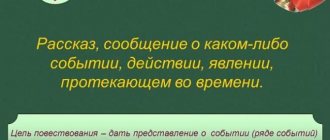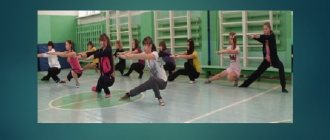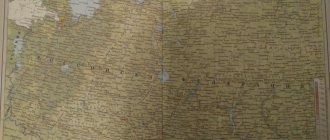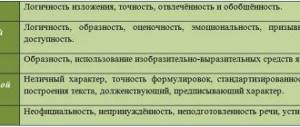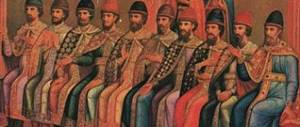State Social Studies 9th grade. - presentation
State Social Studies Grade 9
What is a state? THE STATE is the main institution of the political system of society, organizing, directing and controlling the joint activities and relationships of people, groups, strata, classes, organizations, etc. THE STATE is the main institution of power!
STATE AUTHORITYPOLITICS Political system of society
Theoretical approaches to the essence of the state: social; class; political-legal
Signs of a state: Unified territory Unified system of territorial management Unified system of laws Monopoly on the legal use of force The right to levy taxes Mandatory membership in the state - citizenship Representation on behalf of society in international organizations and negotiations Sovereignty
Functions of the state: INTERNAL: - political (strengthening the foundations of power, forming its bodies, ensuring state sovereignty, political stability, etc.); — social (concern for the well-being of citizens, especially those who are weakly protected, for the exercise of their social rights, correcting the negative consequences of market relations, etc.); — economic (impact through legislation, taxes and duties on the economic life of the country, protection of the economic rights of citizens);
— law enforcement (maintaining order in society, fighting criminal elements, protecting human rights and freedoms from criminal attacks); — environmental (implementation of environmental protection measures, participation in the development and financing of environmental protection programs); — national-cultural (promotion of the development of national identity and national culture, organization and financing of education, science, culture); Functions of the state:
EXTERNAL: national defense, development of diplomatic relations, economic, political and military assistance to other countries Functions of the state:
Form of state: Form of government (who rules and how?) Form of government (how is the population in the territory united?) Form of political regime (how is power exercised in society?)
Forms of government of the state MONARCHYREPUBLIC A) Absolute B) Dualistic C) Parliamentary A) Presidential B) Mixed C) Parliamentary
Forms of government Unitary (single structure of the state apparatus, power of the head of state throughout the country, single citizenship, single system of rights, single judicial system, single-channel tax system); Federal (two levels of government - federal and republican, dual citizenship, two-channel tax system); Confederative (unification of states on a contractual basis, the subjects of the confederation are completely independent states); Commonwealth (union of states, which may be based on a common language, rights, etc.)
Forms of political regime DEMOCRATIC (democracy, majority rule, human rights, free and fair elections, equality before the law, constitutional restrictions on governments, independent judiciary, etc.) TOTALITARIC (tyrannical, dictatorial power, total control over the behavior, activities and thinking of people, without justice repression, militarization, foreign policy aggressiveness) AUTHORITARIAN (hard power that does not encroach on basic civil liberties, actually belongs mainly to one person, rule is carried out on a forceful basis, elections are held irregularly and are often falsified, the media do not reflect the full range of opinions of various segments of the population)
Homework: Lecture in a notebook on the topic “State”; Purchase the Constitution of the Russian Federation; Written in a notebook: “Will humanity ever be able to manage without a state in the future and how? Does an “ideal state” exist and what is it like?”
Plan of notes on social studies 9th grade LESSON 3. STATE
LESSON 3. THE STATE (§ 2)
Within the framework of the topic, a theoretical synthesis of students’ knowledge in history, geography, and social studies acquired in previous years is carried out;
the foundations are laid for studying the section “Political life of modern society” in high school. The concepts of “state”, “citizen”, characteristics of forms of government (monarchical and republican), forms of territorial government (unitary state, federation), ideas about the functions of the state are basic when studying the topic. Lesson Objectives
1. Expand the concepts of “state” and “citizenship”.
2. Characterize the causes, characteristics, functions, forms of the state; promote theoretical understanding of the relationship between the citizen and the state.
3. To promote the development of the following universal learning activities in students: orientation in social roles (using the example of the social role of a citizen); analysis of objects in order to highlight their essential and non-essential features; selection of bases and criteria for comparison and classification of objects; planning and organizing your activities; participation in collective discussion of problems.
Lesson equipment
Textbook, multimedia projector, diagrams.
Plan for learning new material
1. Origin of the state.
2. Signs of the state.
3. The concept of the form of the state.
4. Forms of government and territorial government.
5. The concept of “citizenship”. Citizenship in the Russian Federation. Options for organizing educational activities
To update students’ knowledge, the teacher can turn to the questions in the “Remember” and “Let’s Think” sections and organize a brainstorming session. The class is divided into 7 groups, each of which receives one of the questions for discussion. The teacher reminds the group to write a summary of the answer in their notebooks or on a separate poster. The optimal time for working in groups is 5-7 minutes. After discussing the question in groups, students share their answers with the class. The teacher suggests returning to discussing the answers to the questions and checking them after studying the topic. This technique acts not only as one of the elements of student motivation. It will allow you to check your awareness of learning new material and reflect on activities in the lesson.
Combined lesson
1. The teacher organizes students’ independent work with the text of the textbook. Schoolchildren are offered the following task: based on the section “The Origin of the State,” draw up a diagram of the “Theory of the Origin of the State.”
Theories of the emergence of the state
The teacher can supplement the information in the textbook and name other theories of the origin of the state (for example, patriarchal, which explains the emergence of state principles as the “expansion” of the family and the spread of the family organization of power and subordination throughout society, or psychological, which sees the roots of statehood in the psychology of people). Concluding the consideration of the first question, the teacher draws the students’ attention to the fact that in life the concept of “state” is used in different meanings, and also recalls the semantic differences between the words “state” and “country”.
2. 9th grade students repeatedly addressed this issue when studying the history of Russia, general history, geography and social studies, so the teacher’s main task is to explain the most complex concepts. The teacher invites schoolchildren to find on the pages of the textbook (section “Signs of a state”) those signs with which students are not sufficiently familiar. Practice shows that students pay attention to the concepts of “public power” and “sovereignty”. These signs can be explained based on the textbook text. Next, the teacher organizes the collective implementation of the task: analyze the given phenomena or facts and determine with which characteristic of the state they are associated (connected). Enter the numbers under which they are listed in the table.
Signs and functions of the state
| Signs states | Domestic functions states | External functions of the state |
The student’s explanation may relate to both the characteristics of the state (the Armed Forces of the Russian Federation are part of the state apparatus) and external functions (maintaining the country’s defense capability).
When completing the discussion of the question, the teacher turns to the dictionary at the end of the textbook. Schoolchildren read the dictionary entry “State”.
3. The teacher begins studying the third question by discussing the “Forms of State” diagram, depicting it on the board or demonstrating it using a multimedia projector.
Forms of state
Form of government
What supreme authorities exist in the state. How they are formed
Students complete the task: using the diagram, explain what forms of state are.
4. The issue of forms of government and territorial government is not new for students, so it is advisable to study it in the form of a conversation. The teacher can rely on interdisciplinary connections, adjusting and clarifying students’ knowledge.
When moving on to studying the issue, the teacher invites students to define monarchical and republican forms of government. In case of difficulty, students refer to the “Forms of State” section in the textbook. You can also use materials from the “Forms of Government” table.
Forms of government
| Monarchy | Republic |
| 1. Sole board. | 1. Supreme authorities - |
| 2. The power of the head of state | elective institutions. |
| (monarch) is | 2. Composition of supreme bodies |
| indefinite, lifelong and | authorities are regularly updated. |
| is inherited. | 3. The principle applies |
| 3. Head of State | separation of powers into three |
| acts as a carrier | branches: legislative, |
| state sovereignty. | executive, judicial. |
| 4. The monarch does not carry | 4. Statesmen |
| legal liability | carry legal |
| for your actions and | responsibility for their |
| board results. | actions and results |
| board. |
A monarchy, which has all the listed characteristics, is unlimited (absolute). In a limited monarchy, the power of the monarch is limited by the constitution and/or a representative body (parliament). Based on the text of the textbook and their knowledge from the history and geography course, students give examples of states with an unlimited and limited monarchical form of government. As a historical example of limiting the power of the monarch, the material from the “Facts” section presented in the textbook is used.
Students establish the differences between parliamentary and presidential republics based on the text in the “Forms of State” section.
The explanation for the differences between unitary and federal forms of territorial government is constructed in a similar way.
To consolidate the studied material, filling out the unfinished diagram “Forms of government and territorial government structure” is organized. Students receive handouts in which they must enter the appropriate terms, guided by the examples of states provided.
Forms of government
and territorial-state structure
5. When moving on to studying this issue, students work with the text of the school dictionary on social knowledge, in particular, they become familiar with the article “Citizen”. Next, the teacher organizes work with sources. The class is studying the texts “Citizenship in Ancient Athens” and “Citizenship in Ancient Rome.” Then they discuss
questions 4 and 5: what was the full rights of a citizen in these states? What responsibilities did he have? Prove that the title of citizen was an honorary title in both Ancient Athens and Ancient Rome.
After completing the task, the teacher focuses the students’ attention on the issue of citizenship in the Russian Federation. Students study Article 6 of the Constitution of the Russian Federation, the text of which is given in the “Document” section, and complete task 4 of the “In the classroom and at home” section. The teacher can also organize a discussion of D. I. Fonvizin’s statement given in the “The Wise Speak” section.
Concluding the discussion, the teacher can voice the basic civic qualities of a person, use the text of the “Citizenship” section in the textbook: “Conscious and conscientious performance of one’s duties, based on an understanding of their necessity and gradually becoming a habit; willingness and ability to use one’s rights without harming others; active and meaningful participation in the political life of the country, in the development of the most important government decisions, and in their consistent implementation; respect for the historical past of one’s people are civic qualities, or, as they used to say in the old days, virtues that are so necessary today for every member of our society.”
When summarizing the lesson, the teacher asks students to refer to the questions that were discussed at the beginning of the lesson: has your point of view changed after studying the topic? What were you right about? What changes can you make to your original solution?
Homework: § 2 textbooks; questions from the “Let’s test ourselves” section; tasks 1-3 of the “In the classroom and at home” section. As an elective assignment, students are asked to write a short essay on one of the sayings presented in the “Say the Wise” section. Literature for teachers
Kashanina T.V. Origin of state and law: textbook, manual for universities / T.V. Kashanina. - M., 2004.
Political science: encyclopedic dictionary / general. ed. and comp. Yu. I. Averyanov. - M., 1993.
Simonishvili L. R. Forms of government: history and modernity / L. R. Simonishvili. - M., 2007.
Aminov A. M. Business game “You must be a citizen” // Teaching history and social studies at school. - 2003. - No. 8.
Semenov V.V. Form of the state // Teaching history at school. - 2002. - No. 10.

